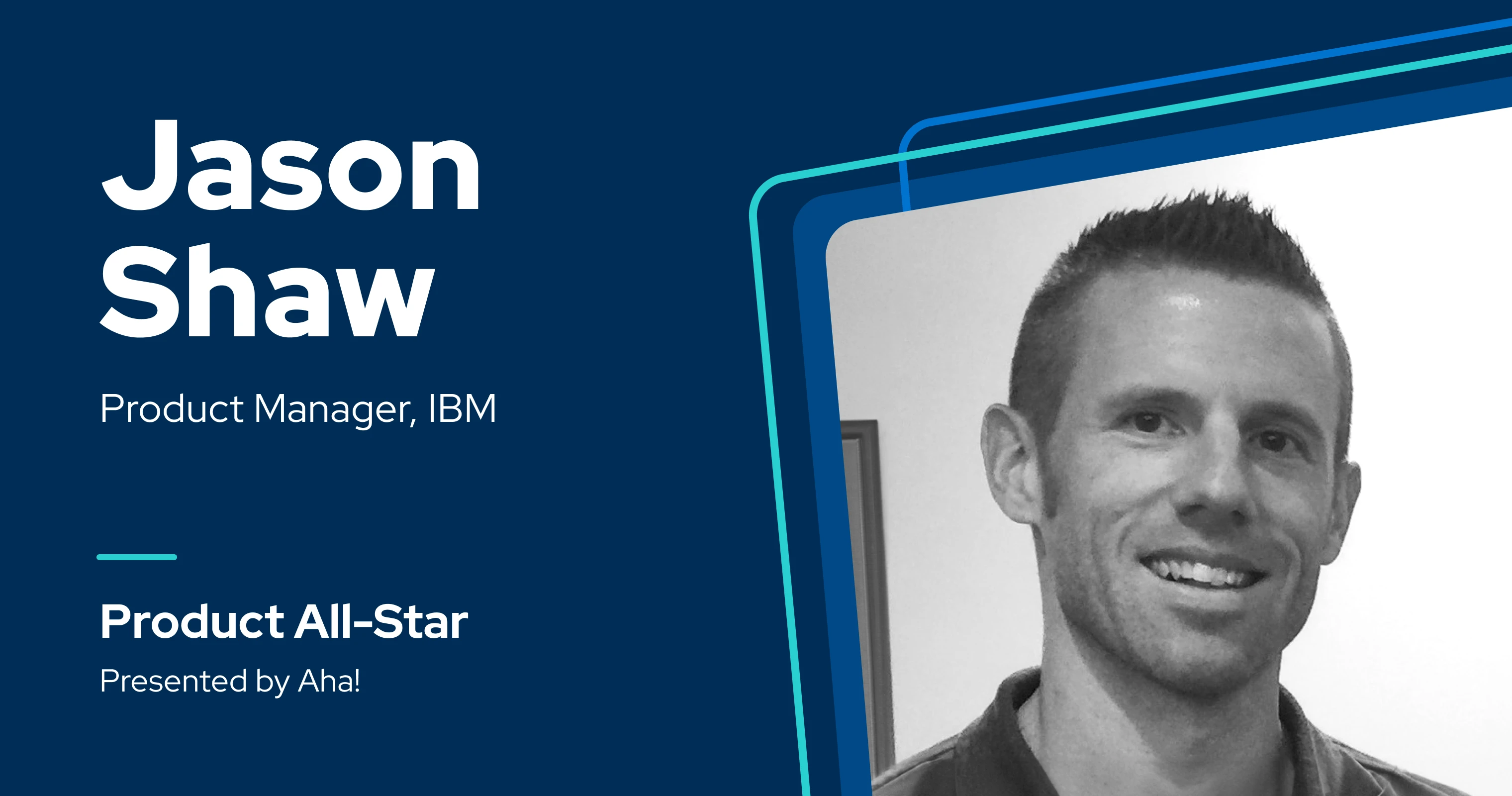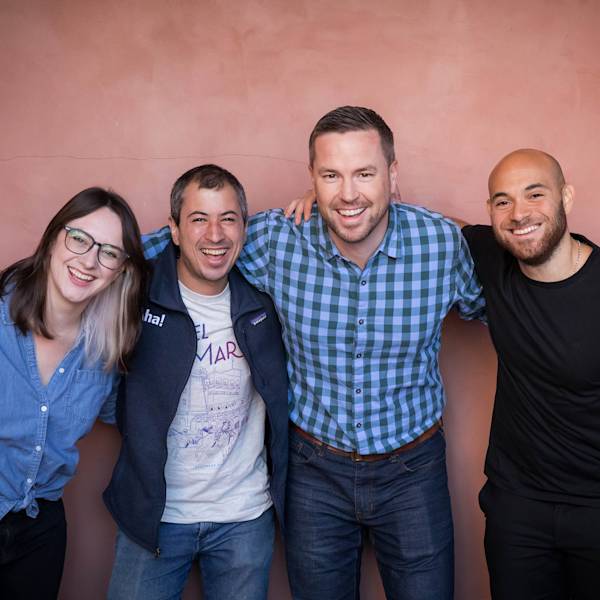
Product All-Star: 6 questions with Jason Shaw
Building products is an adventure. That is what makes it the best job in the world. But this role is not for everyone — true product success requires decisive action, continuous effort, and the relentless pursuit of value.
We have the honor of being connected to companies and product experts who go boldly and bravely. And we are asking folks to share their knowledge with you in the hopes it will inspire you in your own product career.
Jason Shaw is a product manager at IBM. Part of the Turbonomic product team, Jason specializes in optimizing the IT infrastructure and software deployments in containerization platforms such as Kubernetes and Red Hat OpenShift. His day to day is focused on meeting with customers and building new features in Turbonomic that help them automate their IT environments — so they can perform better, save on costs, and boost efficiency.
Outside of work, Jason enjoys spending time with his wife and two daughters. He is also an endurance athlete and is currently training to complete an ultramarathon.
How did you get your start in product?
"I have been working with customers since day one. I got my start at Compaq Computer Corporation in 1998, and shortly after that, it was acquired by Hewlett Packard (HP). I worked within HP's managed services division — first at the help desk and then desktop support. I eventually moved into managed service delivery, supporting enterprise data centers, hardware, and software for customers.
About five years ago, I shifted to Turbonomic: a startup focused on optimizing the performance of hybrid cloud and multicloud software IT environments. I joined Turbonomic as part of its post-sales team. Part of my job was to align customer expectations with what the product could actually do. Not surprisingly, I got a lot of input on new capabilities that customers wanted. I actively worked with our product management and development teams to help prioritize the backlog based on these insights. That was my introduction to product management, and I loved it.
When IBM acquired Turbonomic, I had the opportunity to move from post-sales into a product management role. Today, I am a product manager for IBM Turbonomic. I focus on functionality that helps our customers optimize their Kubernetes and Red Hat OpenShift environments and containerized applications to run efficiently and effectively.”
"Customers have always been core to my career — in customer support, sales, and now product management."
What are the most important traits of a product builder?
"Customer empathy is the most important thing for a product manager to practice. It's your job to build a product that is immensely valuable to customers. But customer empathy is not about you — and it's not always about the product.
Sometimes, you need to step outside the product and look more deeply into the challenges impacting your customers. Ask them, 'What do you deal with day to day that keeps you up at night?' Work to understand their larger business problems first. You can then identify how your product or service can help alleviate those pain points.
"Practicing customer empathy requires admitting that you aren't an expert at everything. Do not be afraid to look past your realm of experience and ask for help."
We have many different software products at IBM. The issues customers experience are sometimes outside of the capabilities of my product to support or are not a problem it can solve. That is when I bring in another product team to help. Doing so builds trust with customers and allows me to deepen my product knowledge of other IBM products at the same time."
What do you recommend not to do when starting out in a product career?
"Do not say yes to everything. That has got to be a cardinal rule in product management. You have to get good at saying no, but in a way that speaks to the customer and reassures them. On your side, that requires research and careful consideration of their request.
"Do your research before saying yes or no to customer ideas or feature requests."
Take some time to review the request and talk to your team. Reasons for saying no could be that it is already part of someone else's roadmap, is in the backlog for future consideration, or might already exist in another IBM product. Or the request simply is not aligned with the overall product strategy. Regardless, you can return to the customer and have a conversation grounded in information and accuracy.
And remember: Just because your customer is blocked or waiting on a particular feature does not mean you can't add product value.
"There is always something more you can do for your customer."
At IBM, we are all about adding value for customers. So if they are waiting on something, we still work to optimize other areas of their IT environment."
How do you stay motivated when complex challenges arise in product development?
"Prioritizing work can be difficult within a huge software environment like ours. This is a challenge I experience constantly, as does my entire product team. I take an unbiased approach to feature prioritization, separating what I think from the actual vision our team is aiming for.
To do this, I keep everyone — product, engineering, and design — aligned on our vision and adding value for customers. We can't solve ten problems at once, so let's come together as a team and decide the top five things that connect to our goals and add value."
"I do not just tell our team what to work on. Rather, we review together and walk away with an agreed-upon course of action — a scope we all believe in."
What is the most exciting aspect of your current role?
"I like the challenge of staying current with technology. I work in the automation space, which is very technical, and that hands-on kind of learning motivates me.
It's the customer side of product work that interested me in product management. Now, as a technical product manager, I can combine my love of customer engagement with my lifelong interest in technology. It's a win-win."
Read more of the Product All-Star series.
Know an inspiring product builder? Nominate them to be featured in an upcoming post. They simply need to be doing quality work and using Aha! software.




